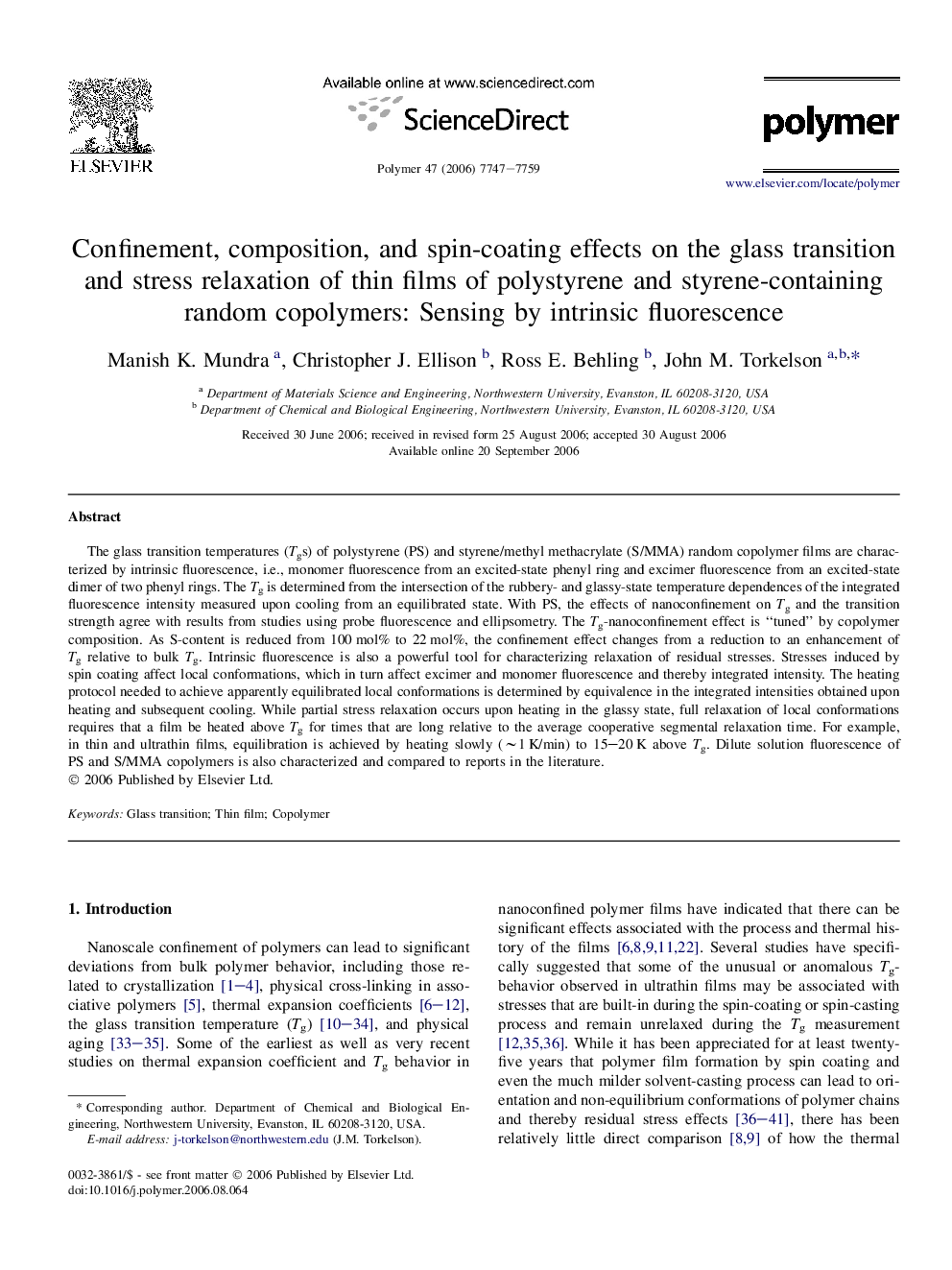| کد مقاله | کد نشریه | سال انتشار | مقاله انگلیسی | نسخه تمام متن |
|---|---|---|---|---|
| 5186571 | 1381107 | 2006 | 13 صفحه PDF | دانلود رایگان |

The glass transition temperatures (Tgs) of polystyrene (PS) and styrene/methyl methacrylate (S/MMA) random copolymer films are characterized by intrinsic fluorescence, i.e., monomer fluorescence from an excited-state phenyl ring and excimer fluorescence from an excited-state dimer of two phenyl rings. The Tg is determined from the intersection of the rubbery- and glassy-state temperature dependences of the integrated fluorescence intensity measured upon cooling from an equilibrated state. With PS, the effects of nanoconfinement on Tg and the transition strength agree with results from studies using probe fluorescence and ellipsometry. The Tg-nanoconfinement effect is “tuned” by copolymer composition. As S-content is reduced from 100 mol% to 22 mol%, the confinement effect changes from a reduction to an enhancement of Tg relative to bulk Tg. Intrinsic fluorescence is also a powerful tool for characterizing relaxation of residual stresses. Stresses induced by spin coating affect local conformations, which in turn affect excimer and monomer fluorescence and thereby integrated intensity. The heating protocol needed to achieve apparently equilibrated local conformations is determined by equivalence in the integrated intensities obtained upon heating and subsequent cooling. While partial stress relaxation occurs upon heating in the glassy state, full relaxation of local conformations requires that a film be heated above Tg for times that are long relative to the average cooperative segmental relaxation time. For example, in thin and ultrathin films, equilibration is achieved by heating slowly (â¼1 K/min) to 15-20 K above Tg. Dilute solution fluorescence of PS and S/MMA copolymers is also characterized and compared to reports in the literature.
Journal: Polymer - Volume 47, Issue 22, 18 October 2006, Pages 7747-7759